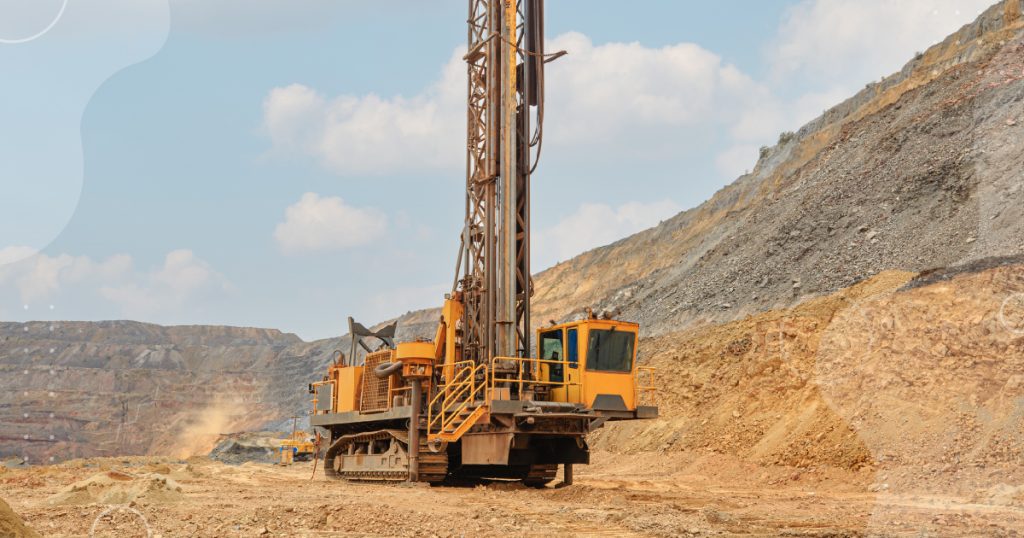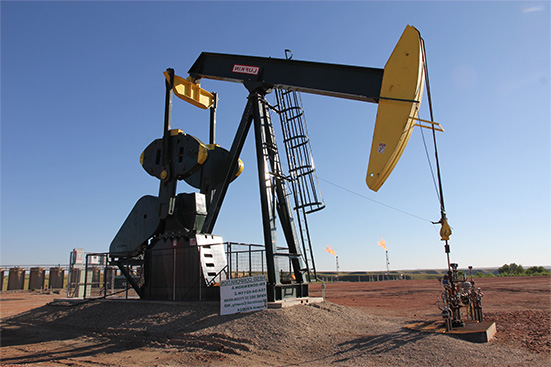
When we consider the essentials of modern life, mineral exploration isn’t usually the first thing that comes to mind. However, it plays a vital role in uncovering the mineral deposits that power our everyday necessities, from electric vehicles to wind turbines. This process is the driving force behind the mining industry, essential for finding economically viable mineral resources. Let’s explore the world of mineral exploration, detailing its processes, stages, and broader impacts on our lives and the environment.
What is Mineral Exploration?
Mineral exploration is the process of finding and evaluating mineral deposits. It involves several stages, such as research, data analysis, drilling, and sampling, to determine if mining can be economically viable.
Historical Context
The quest for minerals dates back to early human civilizations and has evolved with scientific advancements, particularly during the Industrial Revolution and the 20th century, with the introduction of technologies like satellite imagery and geophysical surveys.
Importance
Mineral exploration is essential for the global economy, technological advancement, and strategic planning. It supplies essential materials for various industries, including electronics and renewable energy.
Stages of Exploration
The stages of mineral exploration involve a step-by-step process to find and assess mineral deposits.
- Reconnaissance and Target Generation – Initial research to identify potential areas.
- Claim Staking and Permitting – Securing rights and necessary permits.
- Surface Exploration – Collecting data from surface-based activities.
- Early-Stage Exploration – Detailed sampling and shallow drilling.
- Core Drilling – Deep drilling to analyze subsurface samples.
- Resource Modeling – Creating a 3D model to assess deposit viability.
- De-Risking – Technical and financial feasibility studies.
- Production Decision – Deciding whether to proceed with mining.
- Development and Construction – Building mine infrastructure.
- Production and Operation – Extracting and processing minerals.
Requirements for Exploration
Exploration requires compliance with regulations, a skilled team, permissions, ownership of mineral rights, and proper equipment, including geological tools, drilling equipment, and geophysical instruments.
Contact DW Energy
Want to learn more about oil & gas investing? Our expert team can provide you with more information or schedule a consultation to talk about diversifying your investment portfolio.

Methods and Techniques
Key methods include geological mapping, geochemical and geophysical surveys, remote sensing, drilling, trenching, and pitting, each offering unique insights into potential mineral deposits.
Geological Mapping – Geological mapping involves studying and documenting the physical features of the terrain. Geologists create maps that detail rock types, fault lines, and other geological formations. This method helps identify areas with potential mineral deposits.
Geochemical Surveys – Geochemical surveys analyze the chemical properties of rocks, soils, and stream sediments. By sampling these materials, geologists can detect anomalies in elemental concentrations that may indicate the presence of mineral deposits.
Geophysical Surveys – Geophysical surveys use physical methods to detect subsurface features. Techniques like magnetics, gravity, and seismic surveys measure variations in the Earth’s physical properties, revealing hidden mineral deposits.
Remote Sensing – Remote sensing utilizes satellite imagery and aerial photography to detect and monitor surface characteristics. Advanced sensors can identify mineral alterations and vegetation changes, providing clues about underlying mineral deposits.
Drilling – Drilling is the primary method for obtaining subsurface samples. Core drilling retrieves cylindrical samples from deep within the Earth, allowing geologists to analyze the composition, structure, and grade of potential mineral deposits.
Trenching – Trenching involves digging trenches to expose rock layers and obtain samples. This method is particularly useful for exploring near-surface deposits and understanding the geological context of an area.
Pitting – Pitting entails excavating small pits to collect soil and rock samples from below the surface. It is often used in conjunction with other methods to provide additional data on shallow mineral occurrences.
These methods and techniques, when combined, offer a better understanding of potential mineral deposits, guiding further exploration and development efforts.
Economic Benefits
Mineral exploration drives economic development by creating jobs, building infrastructure, generating export revenues and tax income, investing in communities, growing supply chains, and advancing scientific knowledge.
Environmental Impact and Sustainability
While it poses challenges like habitat destruction and pollution, the industry is adopting sustainable practices to minimize impacts, such as water recycling, reducing greenhouse gas emissions, and land rehabilitation.
Legal and Safety Regulations
Exploration is governed by laws like the General Mining Act of 1872 and environmental protection laws like the National Environmental Policy Act (NEPA), ensuring sustainable and safe practices. Safety regulations like the Federal Mine Safety and Health Act of 1977 focus on protecting workers and the environment, including standards for equipment, hazard control, and emergency preparedness.
Safety Regulations in Mineral Exploration
Safety is important in mineral exploration due to the inherent risks. Regulations ensure the well-being of workers and the environment through strict guidelines and standards.
- Personal Protective Equipment (PPE) – Workers must wear appropriate PPE, such as helmets, gloves, and safety glasses, to protect against injuries.
- Training and Competency – Regular training programs are mandated to keep workers informed about safety procedures and emergency response.
- Risk Assessment – Before any exploration activity, a comprehensive risk assessment must be conducted to identify potential hazards and implement control measures.
- Health and Safety Management Systems – Companies must establish and maintain robust health and safety management systems that comply with legal standards.
- Emergency Preparedness – Plans must be in place for potential emergencies, including first aid stations, emergency exits, and evacuation procedures.
- Environmental Protection – Regulations ensure that exploration activities do not harm the environment, requiring measures like spill containment and waste management.
Technology Developments in Mineral Exploration
Technological advancements have revolutionized mineral exploration, making it more efficient, accurate, and environmentally friendly.
- Geographic Information Systems (GIS) – GIS technology allows for the collection, analysis, and visualization of spatial data, helping in identifying potential mineral-rich areas.
- 3D Seismic Imaging – This technology provides detailed images of subsurface structures, allowing geologists to locate minerals more precisely.
- Remote Sensing – Satellites and drones equipped with sensors can detect mineral deposits from the surface, reducing the need for extensive ground surveys.
- Automated Drilling – Automation in drilling enhances accuracy and safety, reducing human error and exposure to hazardous conditions.
- Artificial Intelligence (AI) – AI algorithms analyze large datasets to predict mineral locations, improving the efficiency of exploration efforts.
- Environmental Monitoring Tools – Advanced tools monitor environmental impacts in real time, ensuring that exploration activities remain sustainable.
These technological innovations not only increase the success rate of finding mineral deposits but also reduce costs and environmental impact, paving the way for a more sustainable future in mineral exploration.
Mineral exploration is essential for economic and technological progress. With advancements in technology and stringent regulations, the industry is becoming safer, more efficient, and more sustainable.
Contact dw energy
Sources:
“Understanding minerals exploration,” Resources Victoria, https://resources.vic.gov.au/community-and-land-use/understanding-exploration
“A Brief History of Mining,” Earth Systems, https://www.earthsystems.com/history-mining/
“The Importance of Mineral Exploration,” Hetherington, https://hetherington.net.au/the-importance-of-mineral-exploration/
“The Mineral Exploration Process: 8 Steps To Navigating the Depths of Earth’s Treasures,” Minrom, https://minrom.com/8-steps-of-the-mineral-exploration-process/
“General Mining Act of 1872,” Wikipedia, https://en.wikipedia.org/wiki/General_Mining_Act_of_1872
“Federal Mine Safety & Health Act of 1977,” United States Department of Labor, https://arlweb.msha.gov/regs/act/acttc.htm
“Exploration Methods Explained,” Association of Mining and Exploration Companies, https://amec.org.au/wp-content/uploads/2023/05/2102-AMEC-NSW-NSW-Fact-sheet-EXPLORATION-METHODS-FINAL.pdf
“Mine Health and Safety,” Society for Mining, Metallurgy, & Exploration, https://www.smenet.org/What-We-Do/Technical-Briefings/Mine-Health-and-Safety
“Emerging Trends in Mineral Exploration and Mining in North America,” Walk the Street, https://www.walkthestreetcapital.com/articles/emerging-trends-in-mineral-exploration-and-mining-in-north-america
